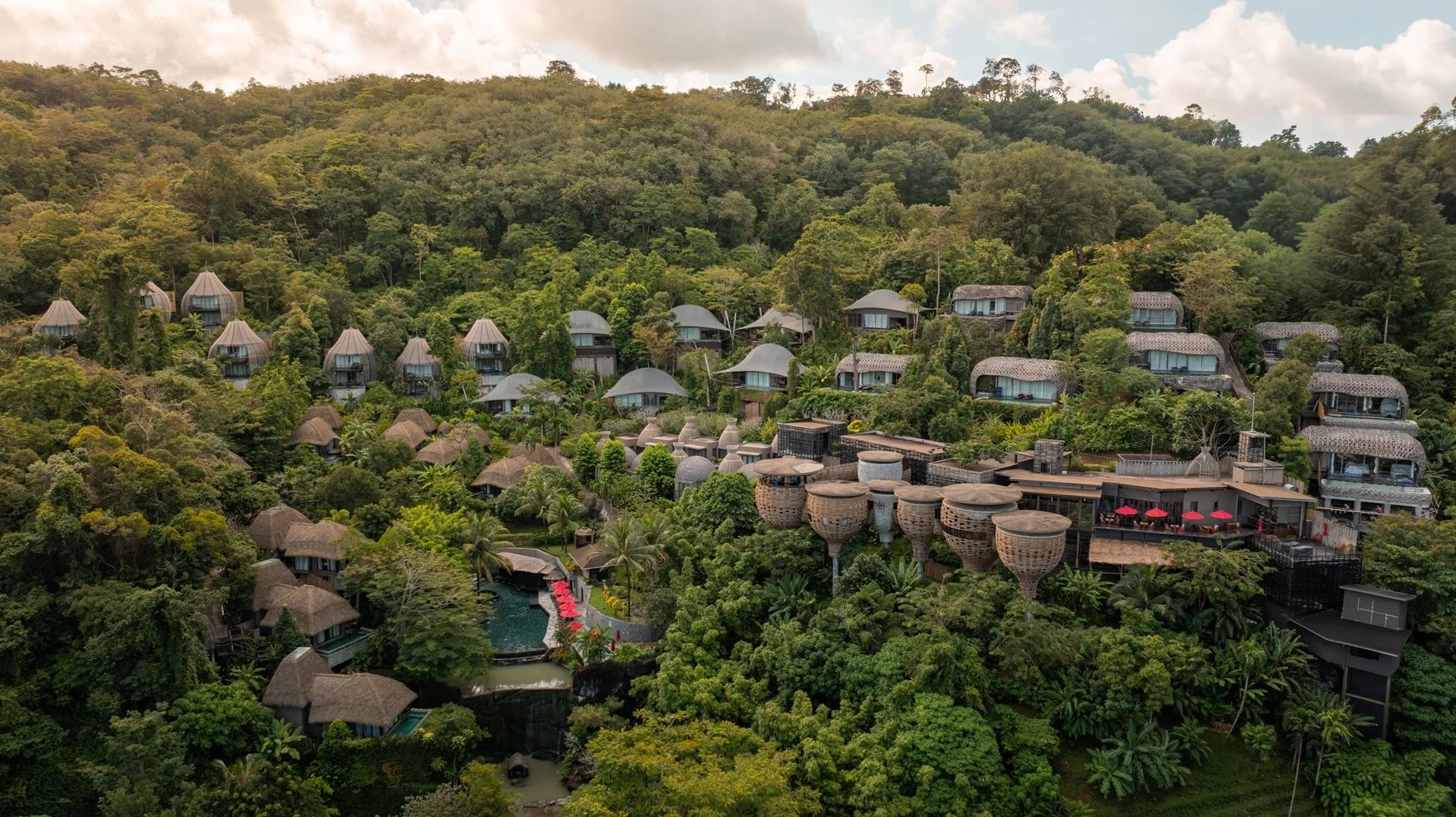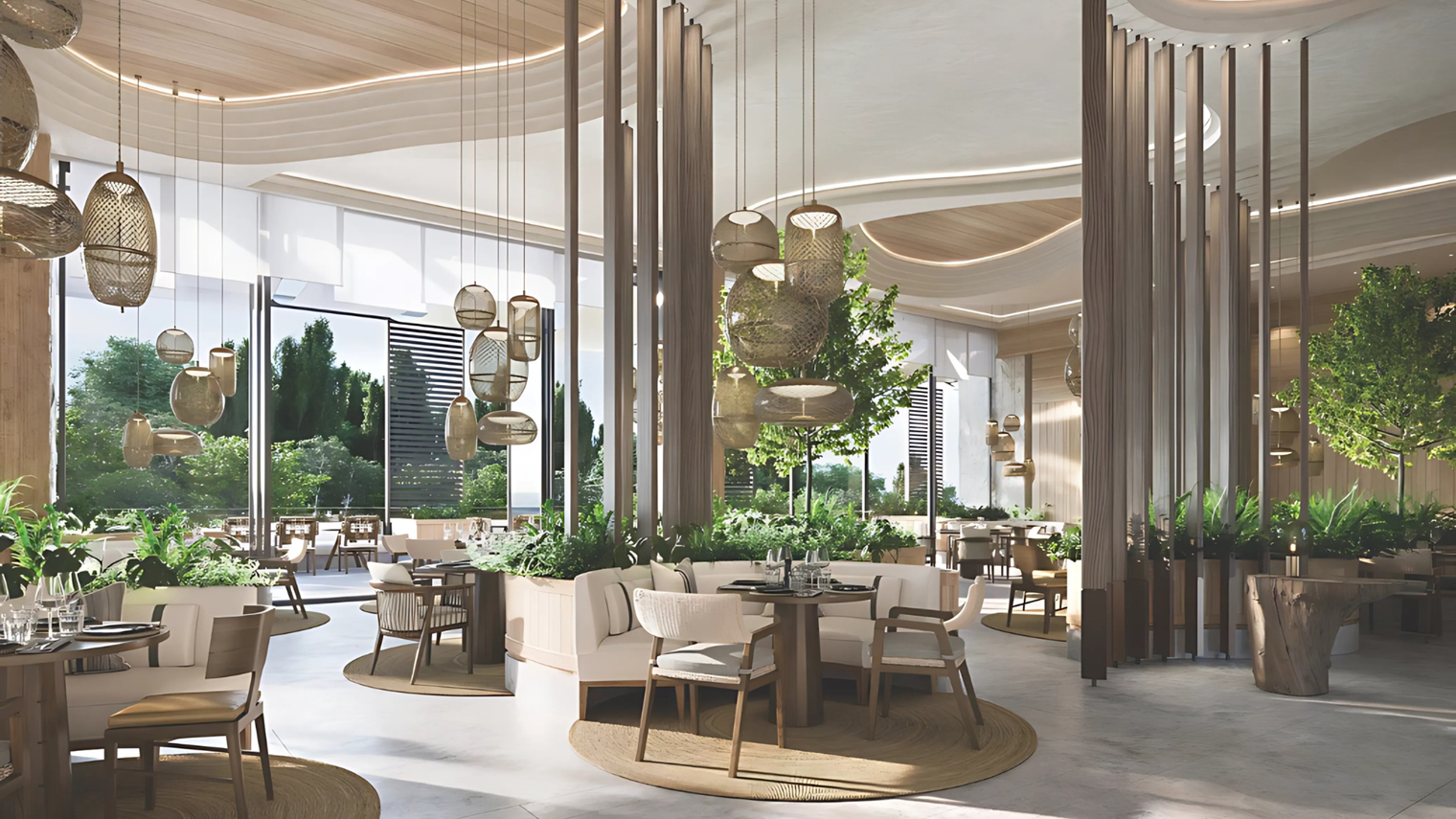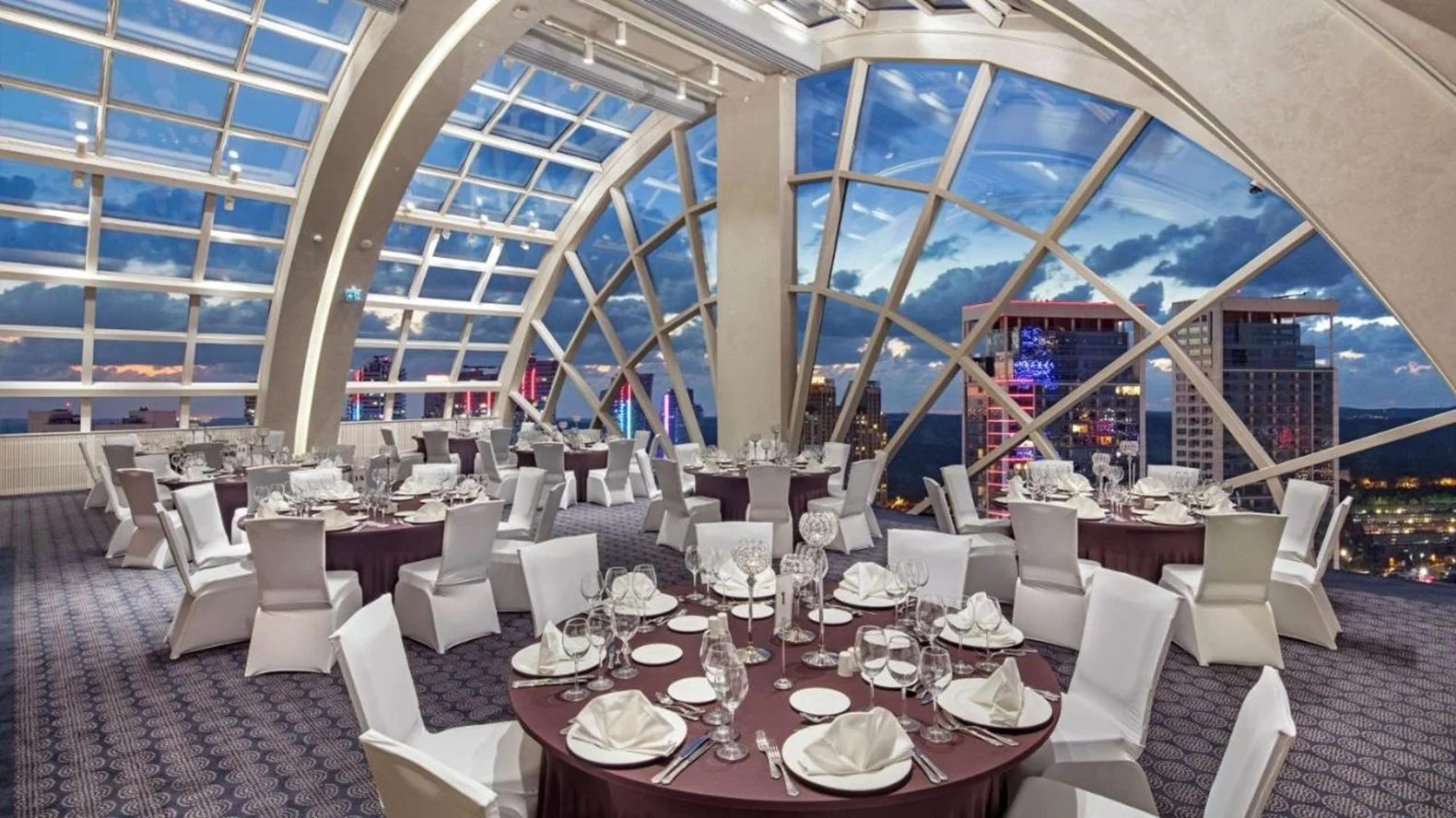Is Biophilic Design the Secret to Happier Guests and Healthier Profits?
Photo by Keemala
Your guests decide in five seconds. Before they spot the check-in desk, their nervous system has already made a judgment: safe or stressful, restorative or routine. That split-second verdict shapes dwell time, spend, sleep quality, and whether they come back.
Biophilic design isn’t about plants; it’s a system that choreographs light, sound, and materials to make those first five seconds work for you, not against you.
At the recent Asia Sustainable Travel webinar, we journeyed from the story-rich forests of Phuket to the concrete canyons of urban landscapes to answer a fundamental question: how can our innate human connection to nature become a powerful tool in hospitality?
We stayed out of theory and focused on what works—audits before aesthetics, sensory layering, phasing without disruption, and how to measure results you can take to your CFO.
Joining me were two leaders who are actively building these environments: Samornpun “Tarn” Somnam, Executive Director of the award-winning Keemala in Phuket, and Ozge Fettahlioglu, a wellness interior architect and Founder of Cocoplum Wellness Design.
The takeaway was unmistakable: biophilic design isn’t about adding plants. It’s a cross-functional operating approach that, done thoughtfully, leads to happier guests, more engaged teams, and a healthier bottom line.
Here are the most actionable insights for hospitality professionals ready to implement.
It's a System, Not an Accessory
The most common mistake hotels make? “Thinking biophilia as an accessory,” warned Ozge. The real value isn't in decoration; it's in a cohesive strategy. Guests form an impression of a space within seconds. Research shows that if they can't sense the positive effects of a design within five seconds of walking in, the opportunity is lost.
Ozge explained that many hotels make the mistake of "decoration-first thinking." They buy plants, repaint a wall, or recarpet a hallway without a strategy and call it a day.
This cosmetic approach often creates a "brittle effect" that appears tired within a few years, failing to address core issues like poor lighting, noise, or awkward traffic flow.
The right approach is a three-step process: Audit, Act, Decorate.
Audit: Start by understanding the guest experience and identifying pain points. Which zones already have good daylight or views? Where do guests and staff feel drained vs. energized?
Act: Fix the structural constraints first. Address issues with light, glare, acoustics, and flow.
Decorate: Only then should you layer in the sensory materials, plants, and other aesthetic elements.
This strategic sequence ensures you build something that lasts, scales, and delivers a return on investment.
Hilton Istanbul Maslak. A Cocoplum project. Photo by Cocoplum Wellness Design.
Use Storytelling as Your Design's Spine
A powerful narrative can transform a property from a place to stay into a destination to experience.
At Keemala, the entire resort is built around the fictional story of four ancient Phuket tribes, each with distinct skills, beliefs, and ways of life.
As Tarn explained, "storytelling is at the heart of our design... our guests don't just stay at the resort. They also step into a living story."
This narrative foundation dictates everything, from the architecture of the villas—like the Clay Pool Cottages of the earth-focused Pa-Ta-Pea clan, the Tent Pool Villas of the wandering Khon-Jorn clan, the suspended Tree Pool Houses of the sky-dwelling We-ha clan, and the resort’s trademark Bird’s Nest Pool Villas of the Rung-Nok clan—to the patterns embedded in the walkways.
Clockwise from top left: Keemala’s Clay Pool Cottages of the earth-focused Pa-Ta-Pea clan, the Tent Pool Villas of the wandering Khon-Jorn clan, the resort’s trademark Bird’s Nest Pool Villas of the Rung-Nok clan, and the suspended Tree Pool Houses of the sky-dwelling We-ha clan. Photos by Keemala.
This approach creates a deep, memorable connection to the land and its imagined traditions.
But what about an urban hotel without a mythical forest?
Ozge advised turning your limitations into your plot. "Start with asking yourself a couple of questions," she suggested. "What made this place, the river, the market? Is it the railway? Is it the industry?"
Find that single, authentic thread and make it the spine of your design. Call your property 'The River House' or 'Market Quarter' and let that story guide your choice of materials, colors, and even small operational rituals your staff can share with guests.
You can't plant a forest in a concrete block, but you can evoke the essence of your location.
Swissôtel Georgia. A Cocoplum project. Photo by Cocoplum Wellness Design.
Choreograph a Full Sensory Experience
If you don't have a rainforest, your job is to replicate the psychological cues it provides. This means choreographing light, sound, and texture to create a feeling of natural immersion and calm.
Light
Maximize natural daylight wherever possible.
For deeper interior spaces, use layers of lighting. Ozge recommends diffuse, patterned lighting that mimics how sunlight filters through leaves.
Tunable lighting, which adjusts color temperature throughout the day to support our circadian rhythms, is now a "must-have."
Sound
Sound is one of the most powerful—and often overlooked—tools in a designer's kit.
First, reduce mechanical noise with absorbent materials and smart acoustic zoning. Then, introduce sounds people want to hear. The sound of water, for instance, is universally calming and grounding.
At Keemala, guests are immersed in the sounds of nature—birdsong, the rustle of leaves, and flowing water from natural streams, supplemented by features like a meditation cave built around existing waterways.
Keemala’s meditation cave
Materials
Move beyond catalogs and choose honest, natural materials that age gracefully, like hand-oiled timbers, stone, and copper.
A mix of rough and smooth surfaces provides the "quiet complexity" our brains find both calming and engaging. These tactile surfaces invite touch, creating a sense of safety and curiosity.
Use biomorphic patterns—designs inspired by nature—on carpets, screens, or wall panels to connect your space to the local environment.
Hilton Istanbul Maslak. A Cocoplum project. Photos by Cocoplum Wellness Design.
Retrofitting Without the Renovation Headache
A full renovation can feel overwhelming. But you can still retrofit for wellness with minimal hassle if you plan it right.
"When you're renovating, you have to think like a ship you're repairing at sea," Ozge said. "Isolate, then fix and sail on."
The key is phasing. The planning phase should be the longest part of the project.
Zone and phase
Both Tarn and Ozge emphasized the importance of zoning off sections of the property for updates, allowing the rest of the hotel to operate smoothly.
Tarn noted that at Keemala, "we try to get all the work done discreetly and behind the scenes." Noisy tasks are scheduled for times when guests are likely to be away from their villas.
Build prototypes
To de-risk the project and ensure the design feels right, build a full-scale prototype.
Ozge shared how her team built a complete prototype room on a factory roof for a Swissôtel project, allowing managers to walk through and approve every detail before mass production. This avoids costly mistakes.
Use modular construction
To speed up the execution phase, build as much as possible off-site.
Furniture, fixtures, and even entire bathroom pods can be manufactured in a factory and installed quickly, minimizing on-site disruption.
Measure and Scale
If you're renovating in phases, measure guest metrics before and after each phase.
This provides real data to justify the next stage of investment and allows you to make adjustments for even better results.
Connecting Design to the Bottom Line
Happy guests are wonderful, but a profitable business is what makes a long-term positive impact possible. Ozge was clear: biophilic design is a revenue driver, and there is robust research to prove it.
"I talk about this all the time, because it all comes to the bottom line," she stated. While a comprehensive list of studies can be found in the white paper shared with attendees, she highlighted several key findings:
Increased dwell time.
Guests spend up to 36% more time in biophilic-designed lobbies, which translates directly to increased retail and F&B spend.
Higher willingness to pay.
Biophilic features increase the perceived aesthetic and luxury feel of a space, making guests more willing to pay premium rates. This has a direct, positive impact on ADR.
Improved employee well-being.
The benefits extend to your team. Biophilic workplaces are proven to reduce absenteeism and increase productivity—a key reason companies like Google and Amazon are investing heavily in this area.
Tarn confirmed these outcomes at Keemala. "We can see the success of our biophilic design... from the number of returning guests and the length of the stay," she said.
The unique, nature-integrated wellness experiences encourage guests to stay longer to fully immerse themselves, and she noted that "most of our guests... are willing to pay extra for unique experiences."
Unique experiences at Keemala include dining under the stars (left) and a private dinner under the Tree Towers (right). Photos by Keemala.
Weaving Sustainability into Your Operations
A true biophilic approach extends beyond design and into daily operations.
At Keemala, this commitment is visible everywhere. "We actually focus on sustainability in everything that we do," Tarn affirmed.
This includes:
Sourcing: Materials are locally sourced, eco-friendly, and long-lasting to support the community and reduce the property's carbon footprint.
Waste reduction: The resort has avoided single-use plastics since opening, using biodegradable alternatives. A zero-food-waste policy ensures excess food is donated or composted. Greywater from villas is treated and reused for irrigation.
Upcycling: Used glass water bottles are recycled, and an upcoming project will turn old staff uniforms into new textiles.
Animal welfare: All on-site activities and those offered through third-party partners are strictly animal-friendly.
What You Can Do Tomorrow: Low-Cost, High-Impact Actions
You don't need a massive budget to start making a difference.
Both speakers offered simple, low-cost strategies any hotel can implement immediately.
Maximize natural light and ventilation.
This was the top suggestion from both Tarn and Ozge. Simply rearranging furniture to move seating closer to windows can boost energy for guests and staff alike.
Create "refuge" nooks.
A cozy, protected seating area with a rug, some plants, and good lighting creates a space where guests instantly feel safe and relaxed. This costs almost nothing but delivers immediate psychological comfort.
Play with sound.
Introduce the sound of flowing water or birdsong in the lobby or during breakfast service. It's a simple way to mask unwanted noise and create a calming atmosphere.
Encourage grounding.
If you have any patch of lawn, encourage guests to walk on it barefoot. This simple act helps them connect to the earth and feel more grounded.
Forest bathing at Keemala
Skip Trends. Aim for Timeless.
As Ozge pointed out, trends may change, but good design always stands the test of time. It is a timeless, evidence-based approach to creating spaces that resonate on a deep, meaningful level.
By approaching design as a well-thought-out system, anchoring it in an authentic story, and executing it with strategic care, you can create environments that enhance the guest experience while driving business success.
Hyatt Centric Levent Istanbul. A Cocoplum project. Photos by Cocoplum Wellness Design.
Your Biophilic Design Action Checklist
Ready to get started? Here are a few immediate actions you can take:
Conduct a five-second audit.
Stand in your lobby or a guest room. What is your honest impression in the first five seconds? What do you see, hear, and feel?Identify your story.
What is the one authentic narrative—historical, geographical, cultural—that defines your location?Map your light.
Walk your property at different times of day. Where is the natural light best? Where is it lacking?Listen to your space.
Identify sources of unpleasant mechanical noise and brainstorm ways to mask it with natural sounds.Create a refuge spot.
Designate one small, underused corner and transform it into a cozy, protected nook.Review your materials.
For your next soft refurbishment, prioritize natural, tactile materials over synthetic, generic ones.Talk to your team.
Ask your team members where they feel most energized vs most drained in the property. Plan quick wins there.
If you are an AST Trailblazer Member:
Watch the webinar recording.
Download the white paper.
Not a member yet? Check out the benefits here.
If you attended or registered for the webinar but have not received the white paper yet, message me or email us at people@asiasustainabletravel.com and we will send you a copy.


















